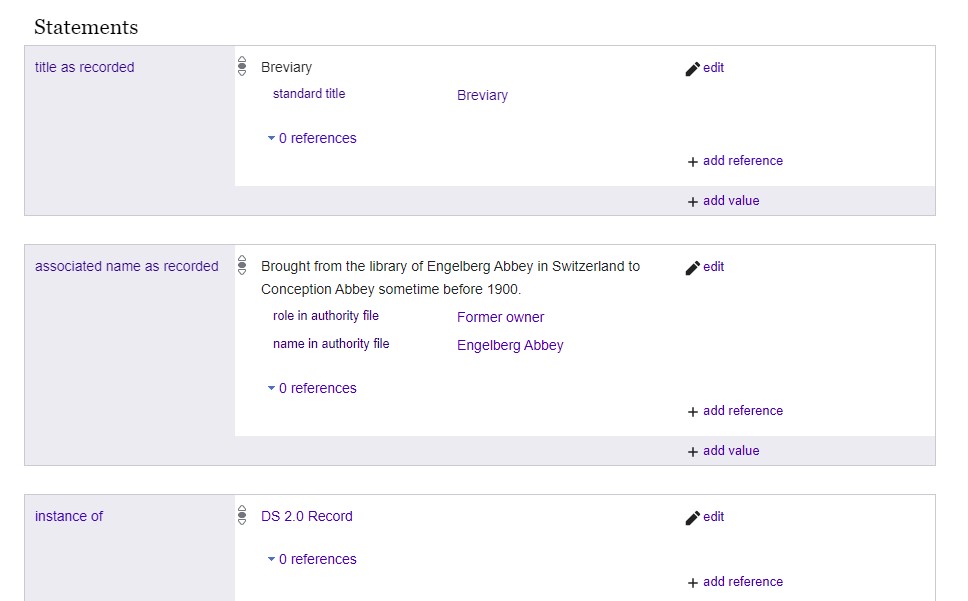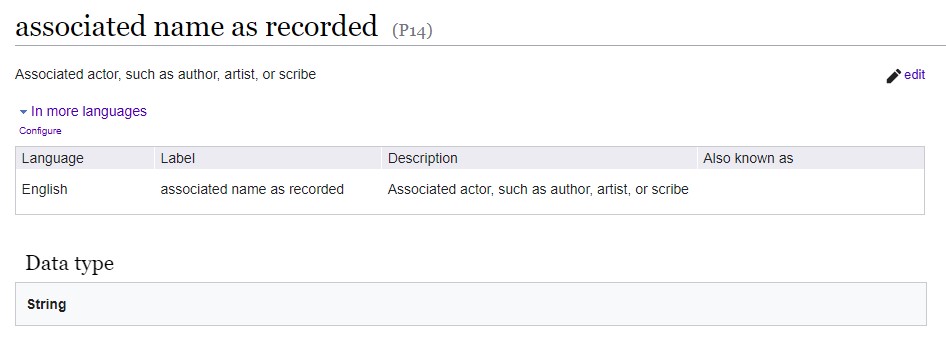Wikibase Items, Properties, and Values
Wikibase, the database software which DS uses to publish its catalog, is structured on a triple-store architecture, similar to and compatible with data encoded in RDF. Like RDF subject-predicate-object triples, Wikibase uses triples in an item-property-value format, in which the entire triple is a called a statement.
An item is any entity or concept represented in Wikibase as a distinct “thing.” Wikibase items can be both specific things (instances) or types of things. Items are described using property statements which use properties to describe structured relationships between the item and its assigned values, which describe in more detail certain aspects or characteristics of the item.
An item page begins with an item name or label. This item name can be changed or updated. Please note that an item is also assigned an internal QID. This is a unique identifier for the item record in the Wikibase and cannot be changed. (Although important from a database management perspective, the QID is not relevant to most user functions in the DS Catalog.) Items can also be given brief descriptions in order to add context and to disambiguate items that have similar names or labels.

Statements act as metadata descriptions for items. Names of relevant properties appear along the left side in gray boxes and values of those properties appear within inset white boxes.

Statements can be further enhanced using qualifiers, which are properties that describe or refine statements. Qualifiers and their values appear under the property value in the white statement box. Qualifiers are used in the DS data model to enrich string values from institutional catalog records by linking them to values found in Linked Open Vocabularies and other LOD authorities.

Values can also be structured as Wikibase items, as they represent structured entities and concepts, like instances of Authority Records and other data types. As items, they are given labels, brief descriptions, and can be described using statements.

Like items, properties have their own pages, with labels and descriptions. In this case, property pages describe and define property parameters of use in the database, like the types of data that can be expected to be values of a property. Properties are assigned a PID rather than a QID. PIDs are important to know not just for understanding the overall metadata model of the Wikibase but are also useful for constructing SPARQL queries, which allows user access to ask questions within and across linked datasets.
